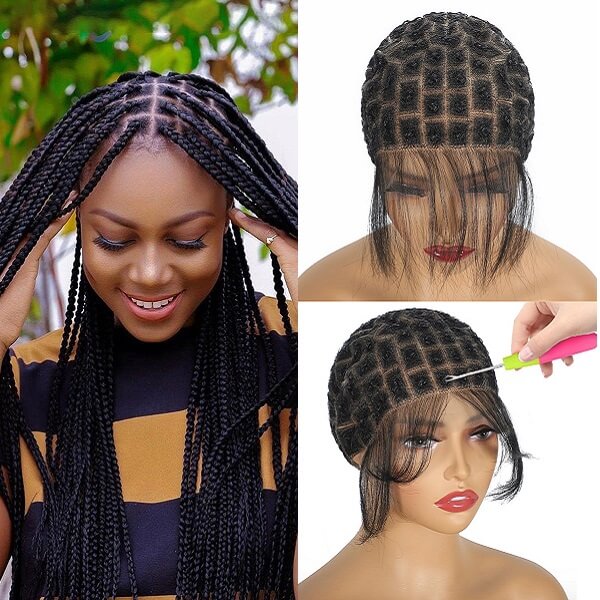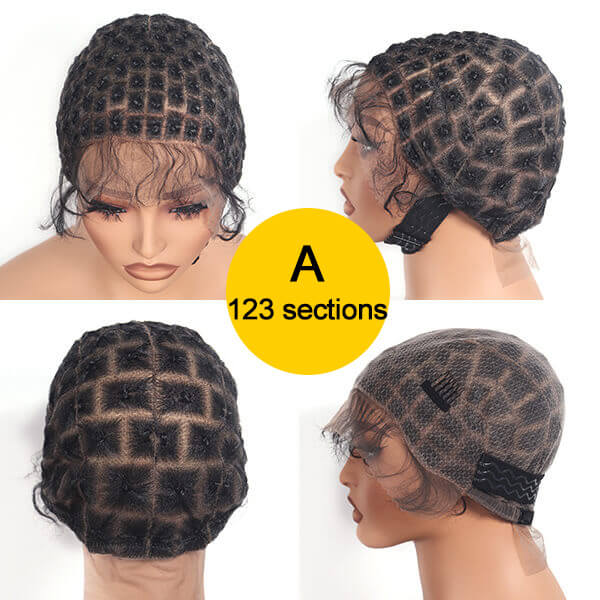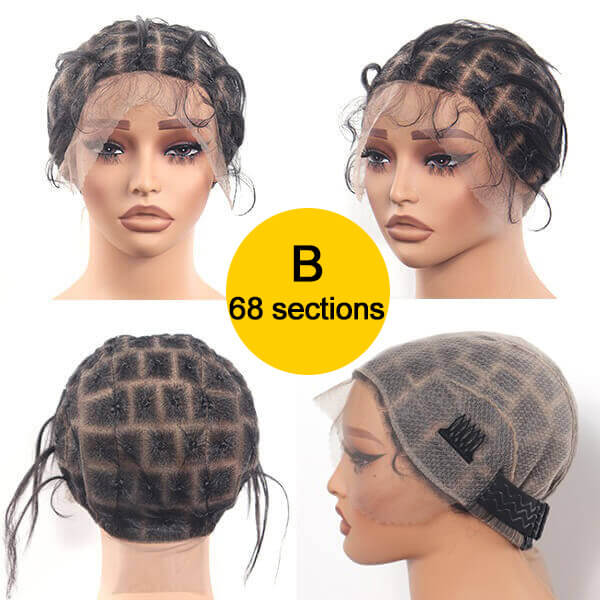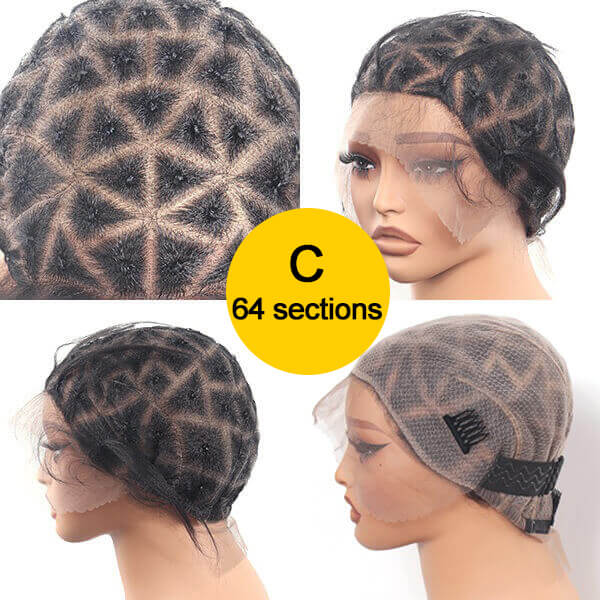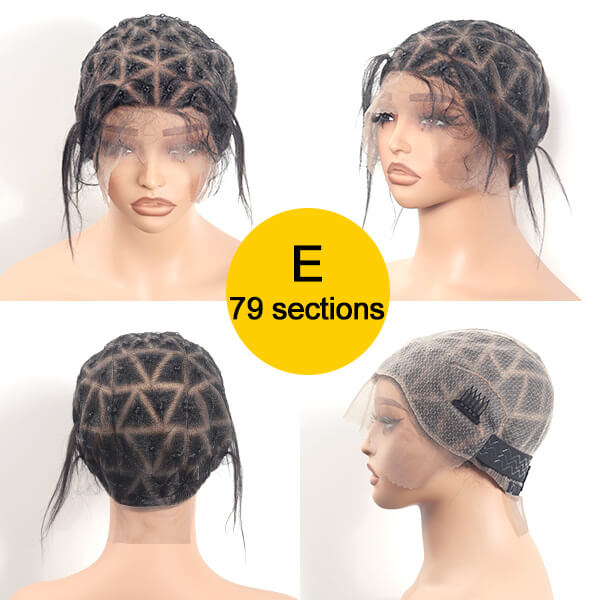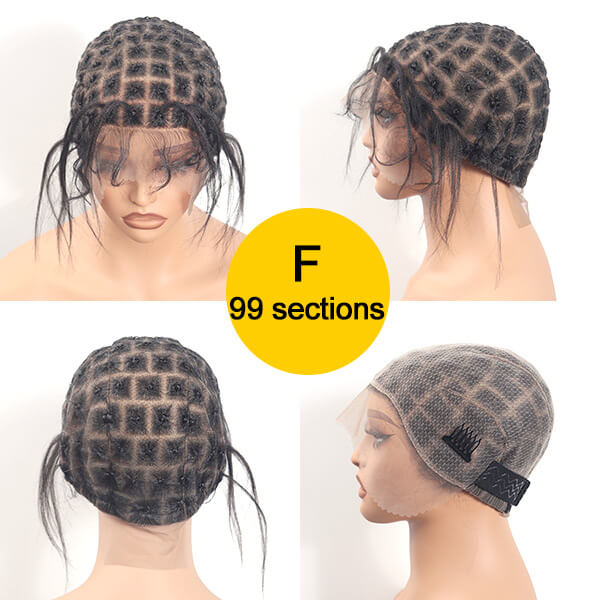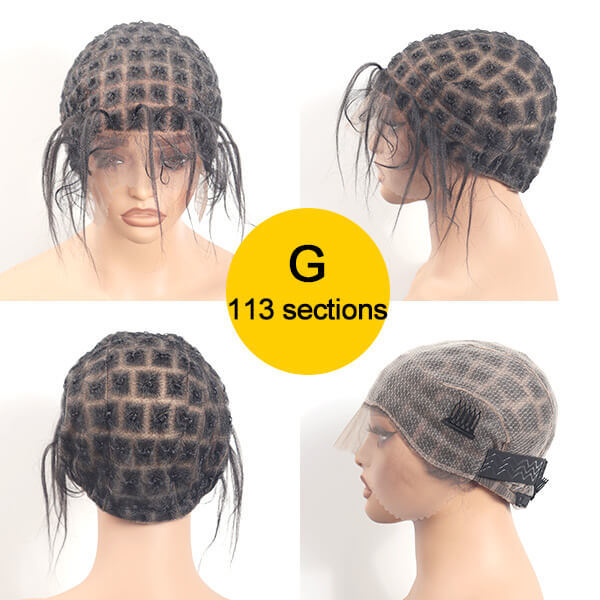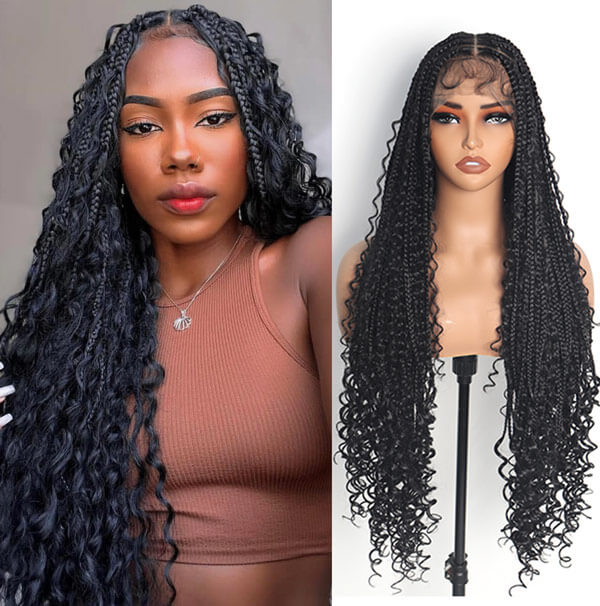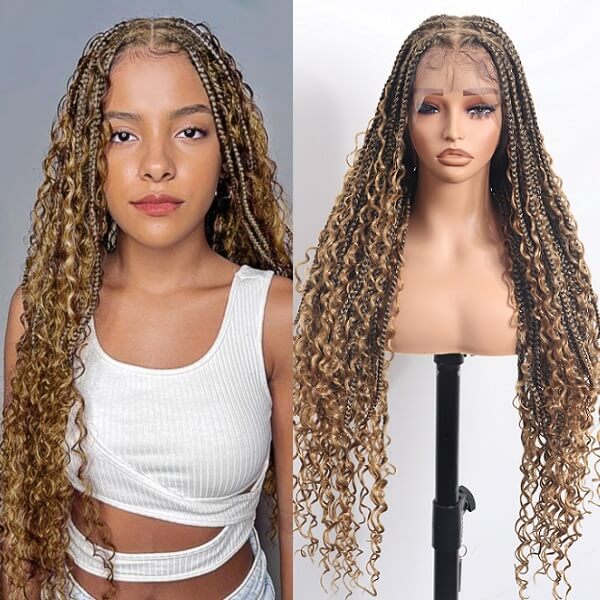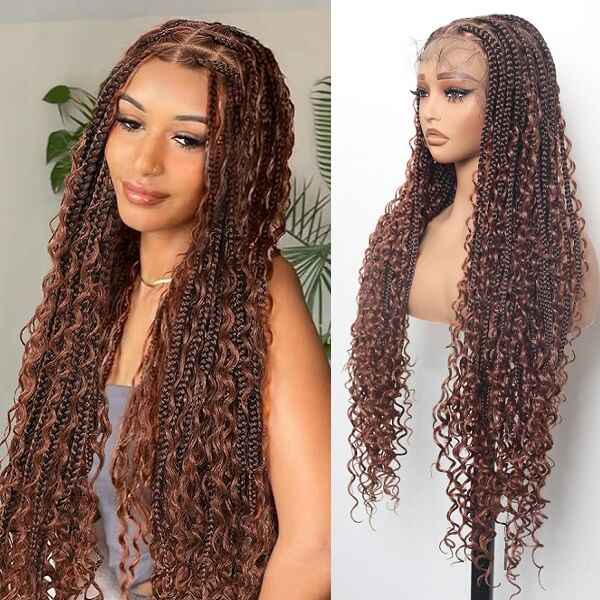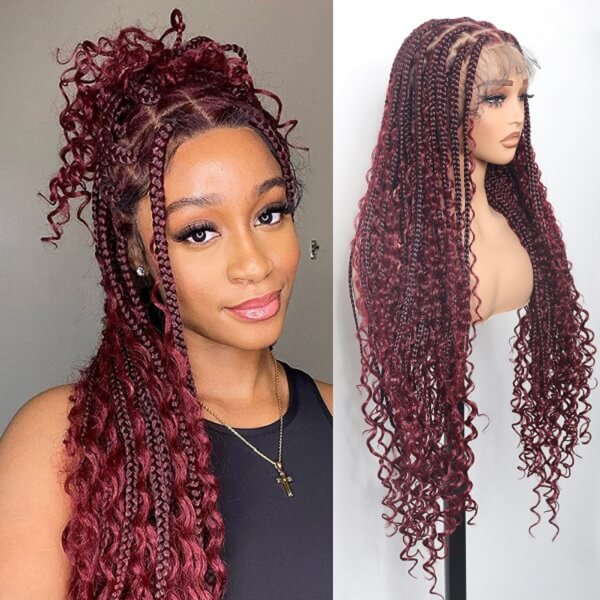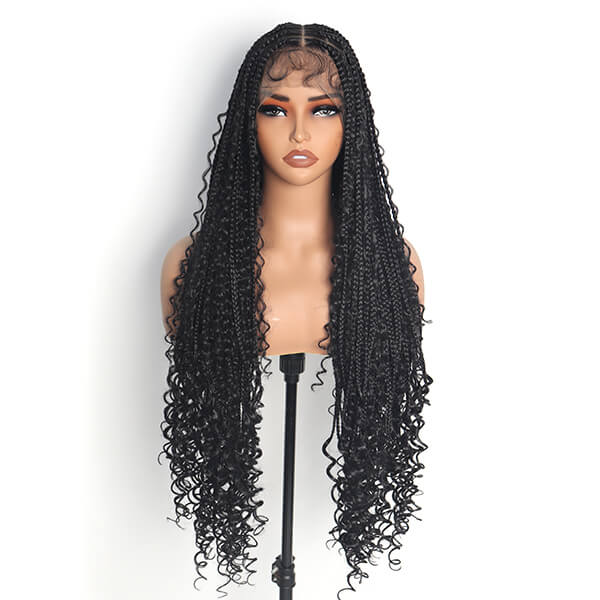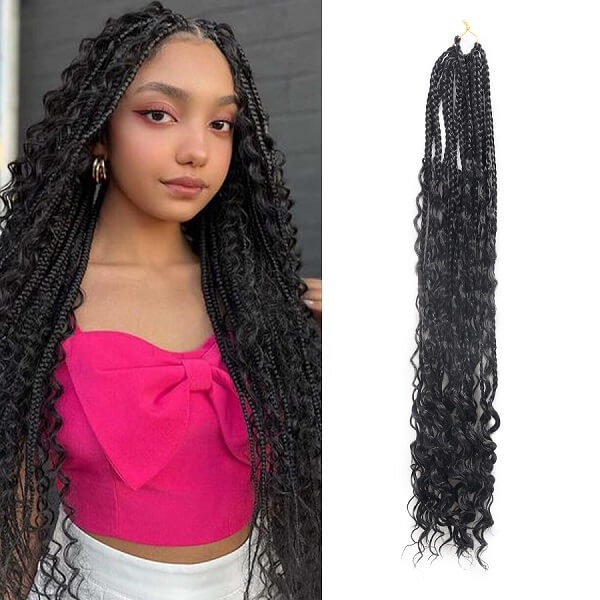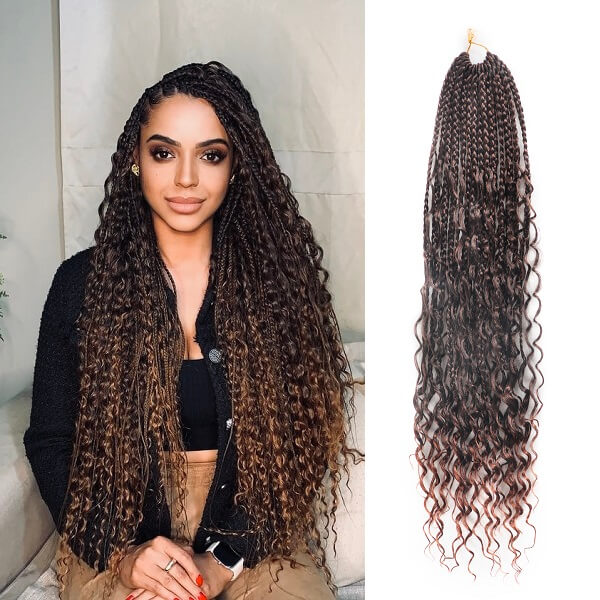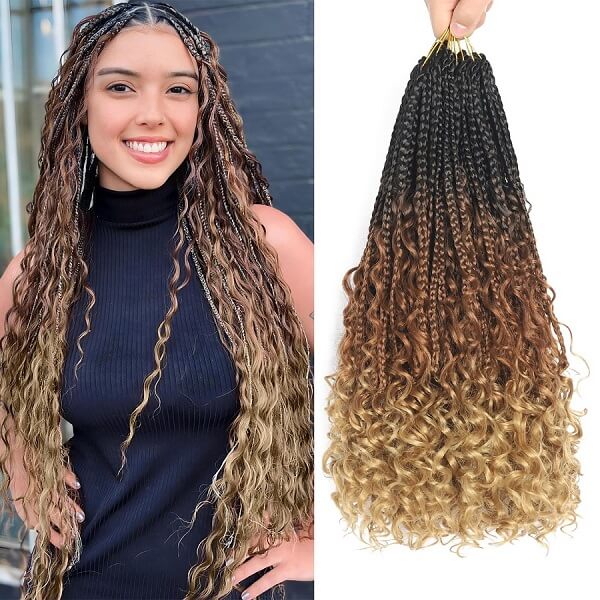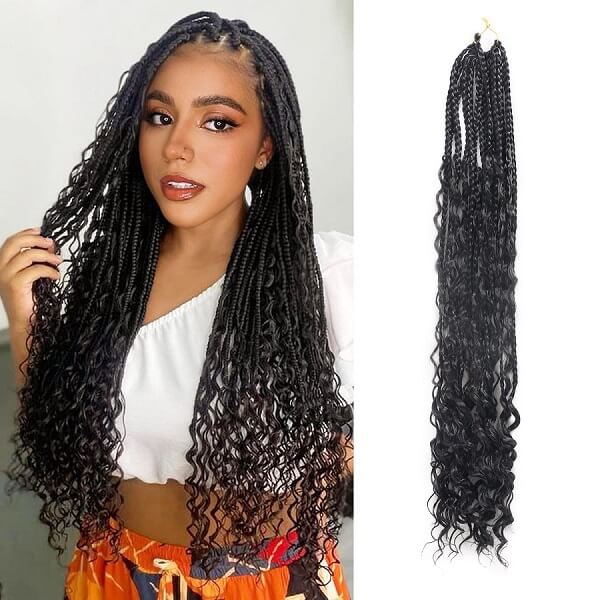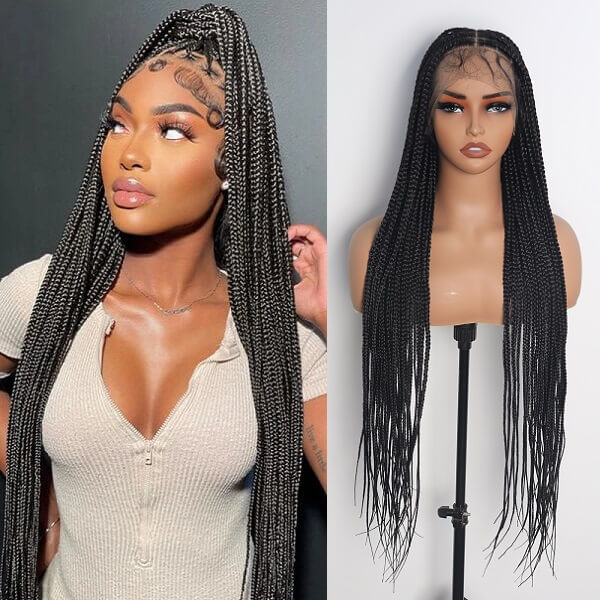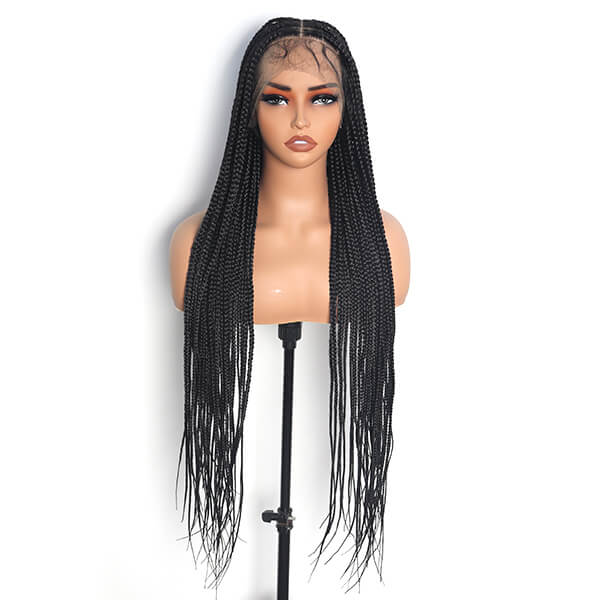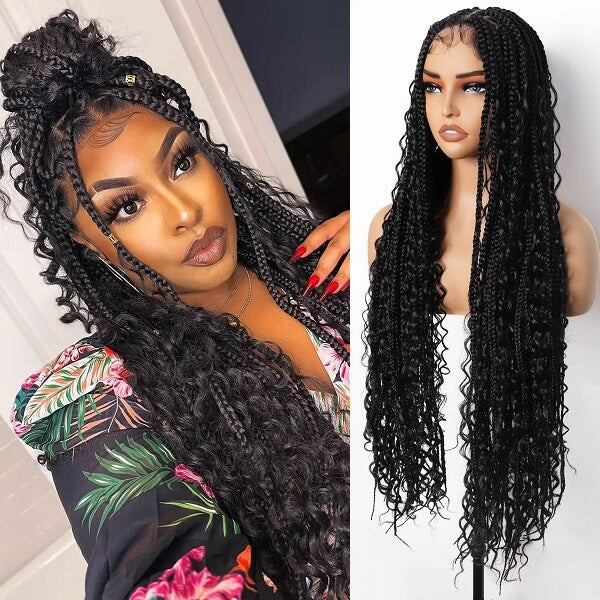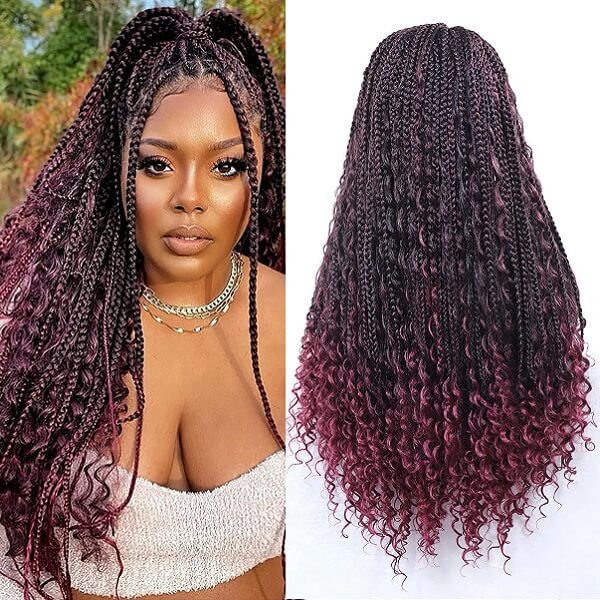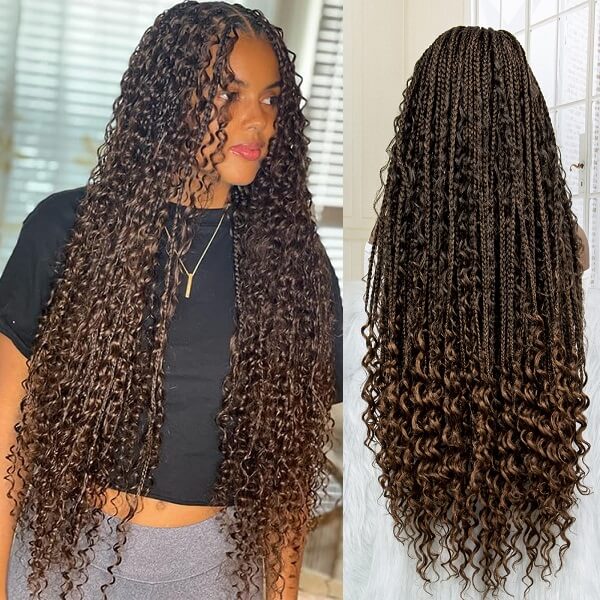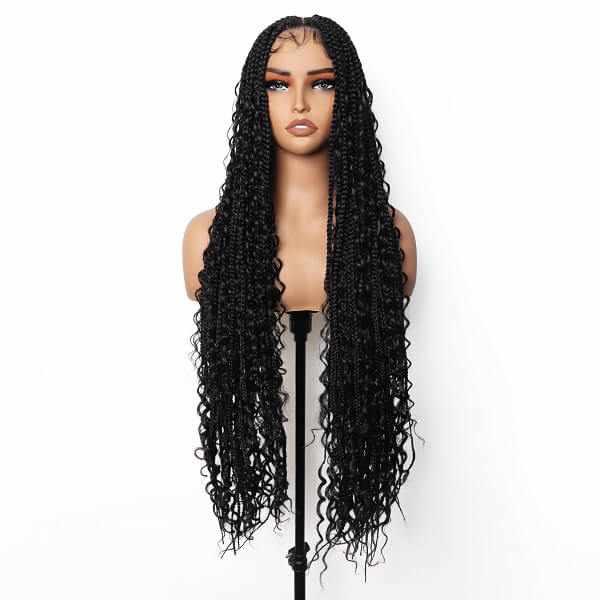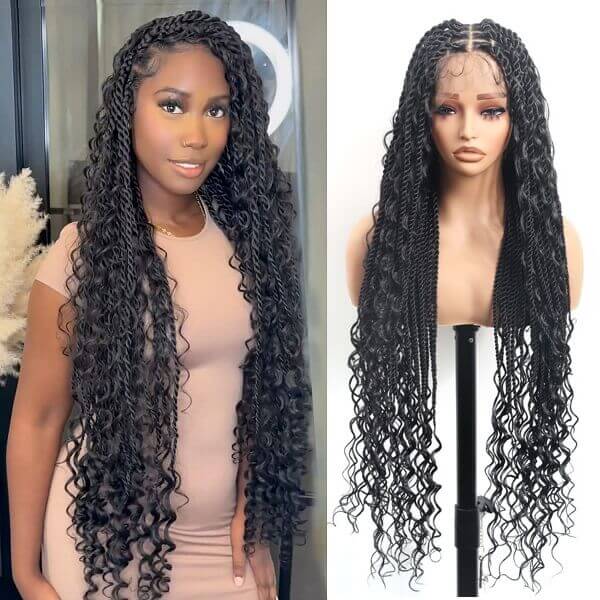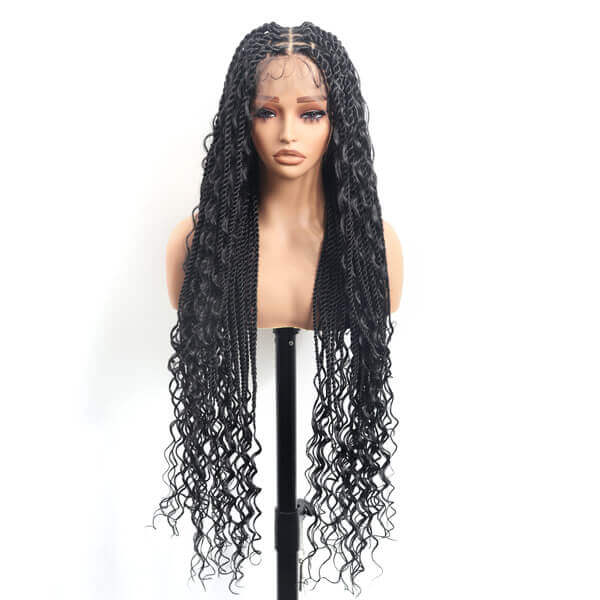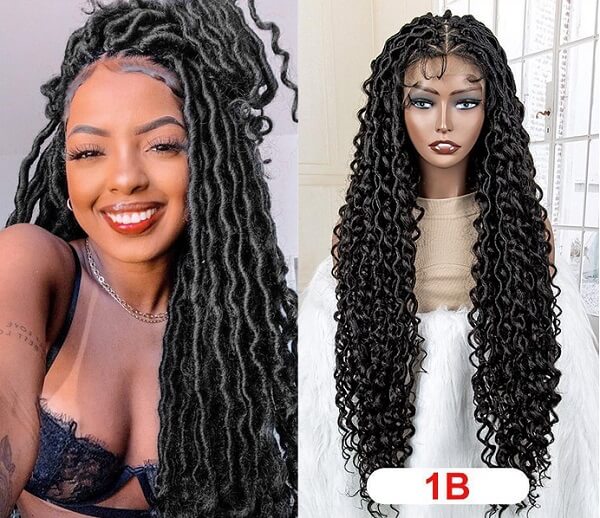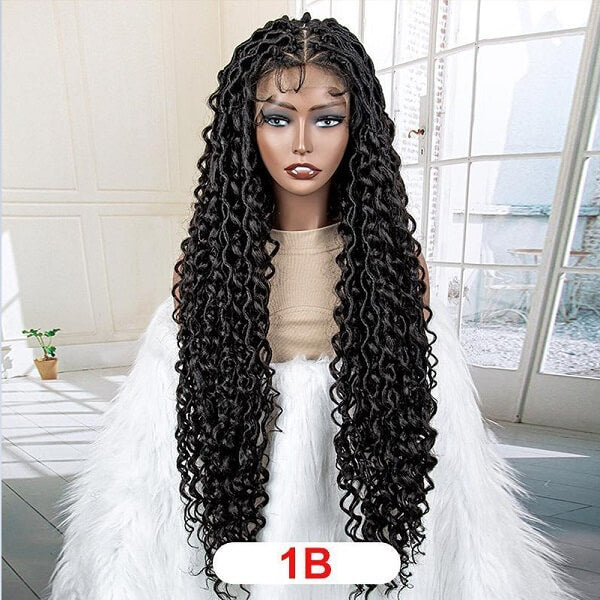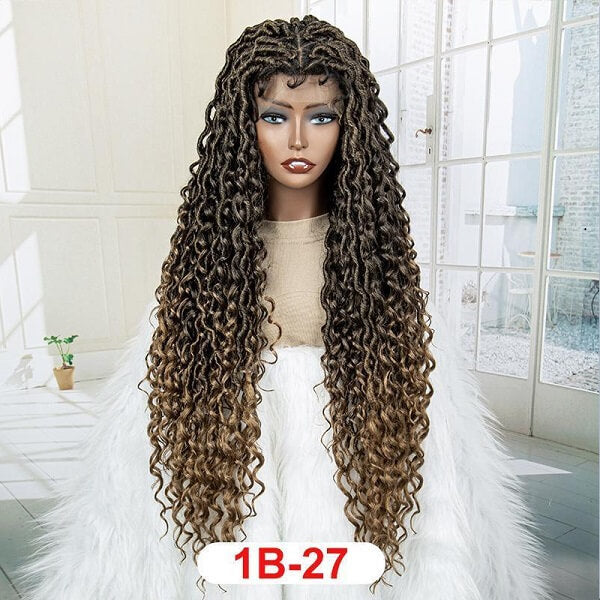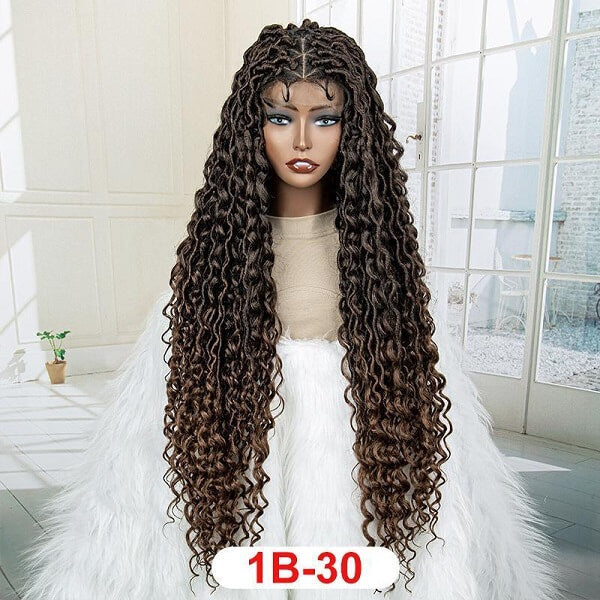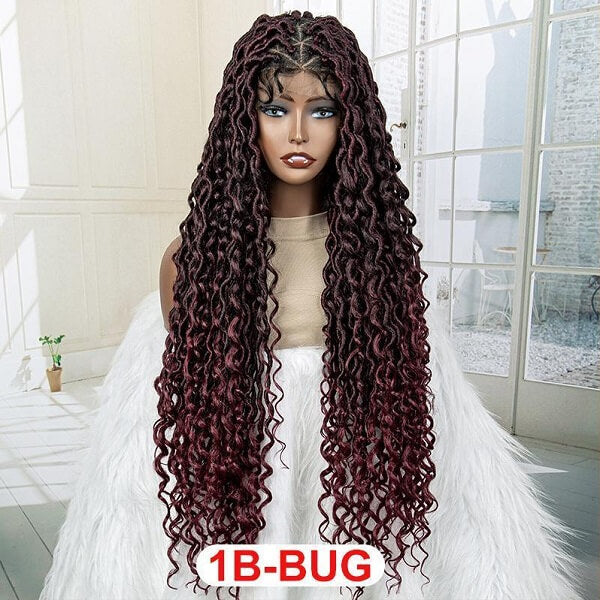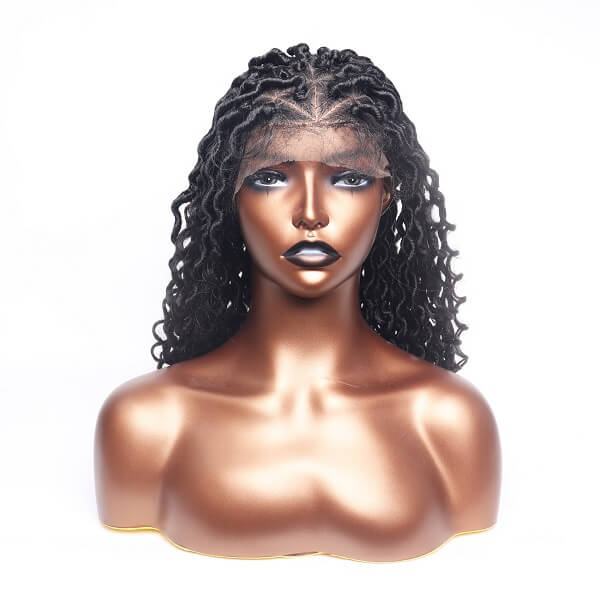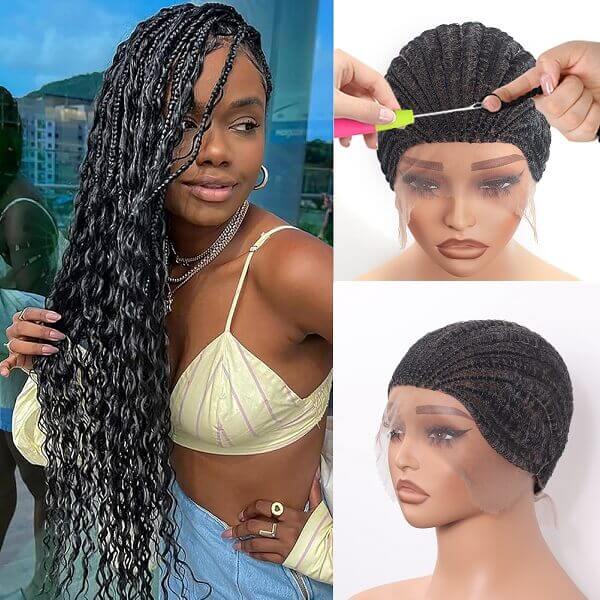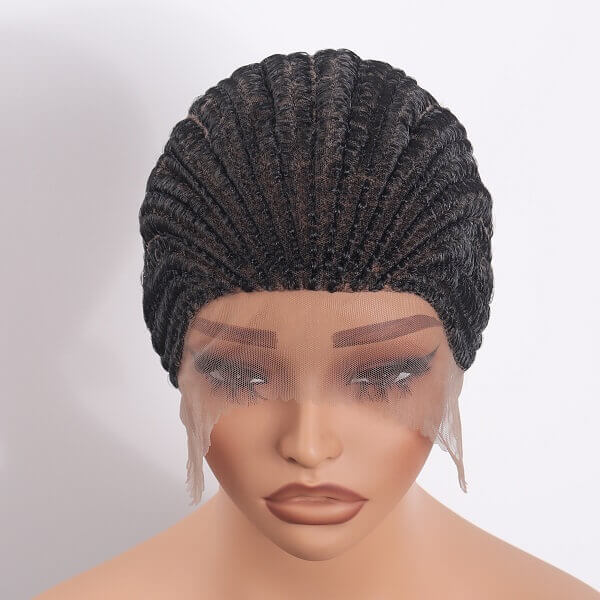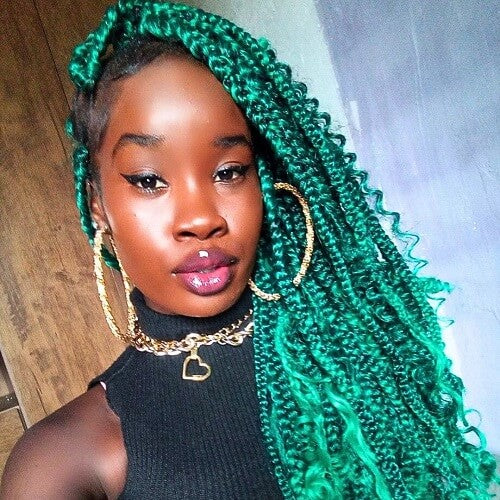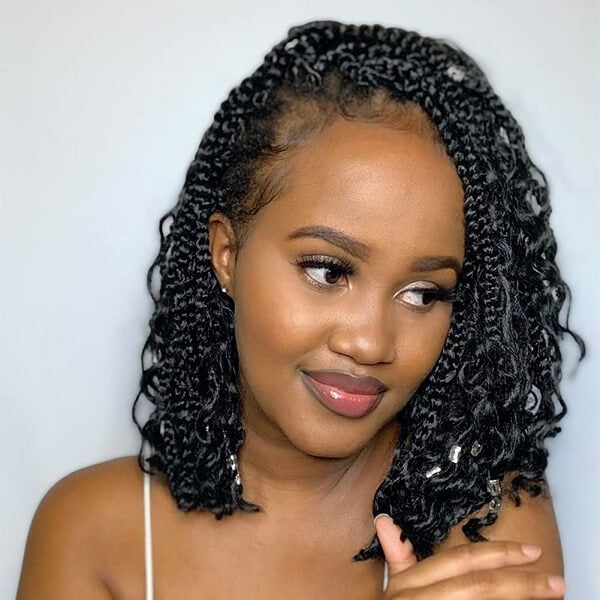Braided wigs are a popular protective style for those who want to rock braids without the time and effort of doing them every few weeks. Plus, they’re a great way to protect your natural hair from the daily wear and tear of styling. But with all the hype around them, one big question keeps coming up: Are braided wigs bad for your natural hair?
As more people embrace protective hairstyles like braids and braided wigs, there has been growing concern about their impact on hair health. While braided wigs can offer a break from daily styling, improper use or installation can lead to damage. In this article, we'll explore the truth behind braided wigs and their effect on your hair, helping you make informed decisions for a healthy, stylish look.
What Are Braided Wigs?
Braided wigs are wigs that come pre-styled with braids, offering a ready-to-wear, braided look without the need for hours spent in the salon. Unlike traditional wigs, which can come in various styles like straight, curly, or wavy, braided wigs are specifically designed with braids already in place—whether they’re box braids, cornrows, or other styles.
Benefits of Wearing Braided Wigs:
- Protects Natural Hair: Braided wigs shield your natural hair from daily wear and tear, environmental damage, and heat styling, allowing it to grow and thrive.
- Saves Time: No need to spend hours in the salon or doing your hair yourself. With a braided wig, you can have a stylish look in minutes.
- Versatility: Braided wigs come in various styles, lengths, and colors, so you can easily switch up your look without permanent changes to your natural hair.
- Low Maintenance: Once the wig is on, there’s minimal upkeep compared to regular braids or other protective styles, making it a hassle-free choice for busy lifestyles.
Common Myths About Braided Wigs and Hair Health
Braided wigs have gained a lot of attention, but along with the popularity come myths about their impact on hair health. Let’s clear up some common misconceptions and get to the facts.
Myth 1: "Braided wigs cause hair breakage."
This myth stems from the idea that wearing wigs constantly can weaken your natural hair. However, braided wigs themselves don’t cause breakage—it's improper usage that might lead to damage. For example, wearing your wig too tightly or not properly preparing your hair underneath can create unnecessary tension on the scalp and hair strands.
Fact: When installed and worn correctly, braided wigs actually protect your natural hair by minimizing daily manipulation, shielding it from environmental stress, and helping retain moisture.
Myth 2: "Braided wigs damage your scalp."
Many worry that braided wigs might harm the scalp due to the braids or prolonged wear. This isn’t true if the wig is properly cared for and not too tight. Issues like dryness or irritation are more likely caused by neglecting scalp care rather than the wig itself.
Fact: Braided wigs can be easily removed, so you can clean, moisturize, and massage your scalp regularly. Proper scalp care ensures your skin stays healthy while you enjoy the wig’s protective benefits.
Myth 3: "Braided wigs stop your hair from growing."
Some people believe wearing braided wigs can stunt hair growth, but this is a misunderstanding. Hair naturally grows when left undisturbed, and braided wigs can create the perfect low-maintenance environment for that.
Fact: Braided wigs prevent over-styling and breakage, two common barriers to healthy hair growth. When paired with good scalp care and regular moisturizing, they can actually encourage hair health.
Potential Risks of Braided Wigs
While braided wigs offer many benefits, improper use can lead to potential risks for your natural hair and scalp. Here are some common issues to watch out for and how to avoid them.
Tightness Causing Tension on the Scalp
Wearing a braided wig that's too tight can create unnecessary tension on your scalp. This can lead to discomfort, redness, and even traction alopecia—a condition where hair is pulled out from the root due to prolonged strain.
Solution: Ensure your wig fits comfortably, and avoid styles that pull excessively on your edges or scalp. Adjustable straps and breathable wig caps can help distribute tension evenly.
Weak Hairline or Thinning Edges
Tight wigs or constant friction around your hairline can weaken your edges over time. This is particularly true if you frequently wear wigs without giving your natural hair and scalp a break.
Solution: Alternate between wearing braided wigs and letting your natural hair rest. Use a satin or silk cap underneath your wig to minimize friction and protect your edges.
Breakage from Lack of Care
Neglecting your natural hair underneath the wig can lead to dryness, breakage, and buildup. If your hair isn’t properly moisturized or cleaned, it becomes more prone to damage.
Solution: Regularly wash and condition your natural hair and scalp. Use lightweight oils or moisturizers to keep your hair hydrated while wearing the wig.
Improper Installation Leading to Damage
Installing a braided wig incorrectly—such as securing it with adhesive directly on your hairline or wearing it for too long—can harm both your scalp and hair.
Solution: Follow proper installation methods. If using glue or adhesive, ensure it’s applied to clean skin and avoid the hairline. Limit how long you wear the wig without removing it to allow your scalp to breathe.
How to Choose the Right Braided Wig for Your Hair Health?
Choosing the right braided wig is essential for both comfort and the health of your natural hair. Here are some tips to help you select the best option for your hair care needs.
- Size Matters: Ensure the braided wig fits comfortably without being too tight or too loose. A tight wig can put unnecessary pressure on your scalp, leading to tension and breakage, while a loose wig may shift and cause irritation. Look for wigs with adjustable straps or elastic bands to customize the fit.
- Length Considerations: Consider the length of the braids—while longer styles are stunning, shorter ones are more lightweight, more comfortable and easier to manage.
- Breathable Lace: A breathable lace cap is crucial for comfort and scalp health, as it allows air to circulate, reducing sweat and buildup. Full lace braided wigs are generally more airy and comfortable than lace front braided wigs. When choosing a wig, opt for high-quality lace materials like HD lace, which offers a natural feel and enhanced breathability.
- Adjustable Straps: Adjustable straps or bands ensure the wig fits securely without pulling too tightly. This feature allows for a customizable fit that can help reduce tension on the scalp and prevent discomfort.
- Quality Hair Materials: The type of hair used in the wig affects not only the look but also the health of your natural hair. Choose wigs made from high-quality synthetic or human hair. Human hair wigs, in particular, offer the most natural look and feel. High-quality synthetic hair is more lightweight and natural.
By selecting the right braided wig with these features, you can enjoy the look and benefits of a protective hairstyle while minimizing the risks to your natural hair and scalp health.
How to Protect Your Natural Hair While Wearing a Braided Wig?
Braided wigs can be a great way to protect your hair, but proper care is essential to keep your natural hair healthy underneath. Here are some tips to ensure you’re wearing and maintaining your braided wig the right way.
Ensure Proper Installation
- Avoid Tightness: A wig that’s too tight can strain your scalp and hairline, leading to discomfort and possible hair loss. Adjust the straps or clips for a secure yet comfortable fit.
- Use a Breathable Wig Cap: A good-quality wig cap acts as a barrier, protecting your natural hair and scalp while allowing airflow. Look for caps made from lightweight, breathable materials.
- Position Correctly: Ensure the wig is positioned securely without tugging on your edges or causing tension around the hairline.
Maintain a Healthy Scalp
- Clean Regularly: Wash your scalp and hair underneath the wig every 1–2 weeks to remove dirt, sweat, and buildup. Use a mild shampoo and focus on your scalp.
- Moisturize Your Hair and Scalp: Dryness can lead to breakage, so keep your hair hydrated with a lightweight leave-in conditioner or natural oils like jojoba or argan oil.
- Massage Your Scalp: Gently massaging your scalp promotes circulation, which can support healthy hair growth while relieving tension.
Take Breaks Between Wears
- Avoid Long-Term Wear: Wearing your wig for extended periods without a break can lead to buildup and strain on your hair. Aim to remove your wig daily or every few days to let your scalp breathe.
- Let Your Natural Hair Rest: After a few weeks of wearing a braided wig, give your natural hair a break. Wear low-manipulation styles or go completely natural to allow your scalp to recover.
Additional Tips for Extra Care
- Trim and Detangle Your Hair: Keep your natural hair in good condition by trimming split ends and detangling gently before putting on your wig.
- Choose High-Quality Wigs: Investing in a well-made braided wig with features like soft lace and lightweight construction can reduce stress on your scalp and hair.
By following these tips, you can enjoy the beauty and convenience of braided wigs while keeping your natural hair healthy and thriving.
Conclusion
In conclusion, braided wigs are not inherently bad for your hair when used correctly and with care. They can offer a stylish and convenient way to protect your natural hair from daily damage, reduce heat styling, and promote hair growth when installed and maintained properly. The key is to ensure a comfortable fit, practice good scalp care, and give your natural hair breaks between wears.
Explore the protective benefits of braided wigs while being mindful of proper installation and maintenance. When done right, they can be a great addition to your hair care routine.
Ready to protect your hair in style? Check out our collection of high-quality braided wigs at MyBraidedWig.com for a safe, stylish, and protective option that your natural hair will love.
Related Articles:
Are Locs Braided Wigs Bad for Your Hair?









